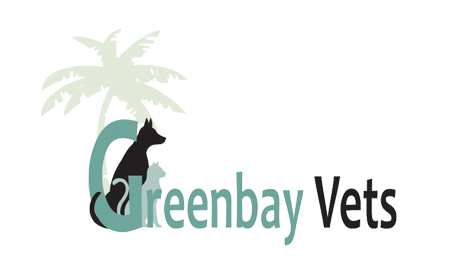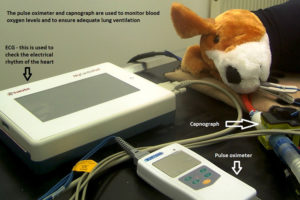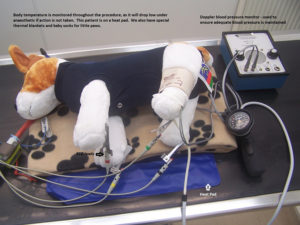Most owners are understandably worried about the thought of their pet having a general anaesthetic. We hope this article will help to put your mind at rest and answer some of the questions you may have. Our vets will always be happy to discuss any particular concerns you have.
A general anaesthetic is given to make an animal unconscious and to relieve pain. They are used every day in veterinary practices to allow surgery or dentistry to be performed on pets. We may also need to use a general anaesthetic for other procedures e.g. x-rays, as animals will often not stay still and get into the right position like a human would!
Unfortunately general anaesthesia always carries some risk to the patient, but we do everything we can to minimise this.
Before the anaesthetic
Before the anaesthetic you will be asked to withhold food from your dog or cat (for animals like rabbits and guinea pigs this isn’t necessary). This is to avoid the animal bringing up food during the anaesthetic which can harm their food pipe or be inhaled. We will admit your pet, after going through a consent form with you. On admission your pet is settled into a clean kennel with a cosy bed; you are welcome to leave your pet’s own bedding or a toy with them. The anaesthetic equipment in the surgery is checked daily before use.
What happens during anaesthesia?
1. Intra-venous (IV) cannulation – all dogs and cats having a general anaesthetic should have an IV cannula placed. This is usually placed in a vein in the front leg, and requires a small patch of fur to be clipped.
2. Veterinary examination – all patients are examined by a vet prior to anaesthesia to make sure they are healthy or to document any problems that may affect the anaesthetic. In some cases a blood test is recommended prior to anaesthesia to check organ function.
3. Pre-medication – this is an injection, which usually consists of a sedative and a pain-killer. This helps calm the patient and reduces the dose of anaesthetic drugs needed later. The vet will select particular drugs and dosages depending on your specific pet. Additional pain-killers may be given now as well, if required.
4. Induction – to induce anaesthesia in most cases an injection is given by a vet into the IV cannula.
5. Maintenance – usually anaesthesia is maintained using anaesthetic gas. In most cases this, along with oxygen, is delivered via a tube, which passes down the wind pipe.
6. Recovery – the patient is carefully monitored until they have fully recovered from the anaesthetic.
Monitoring during an anaesthetic
All anaesthetic drugs have effects on the patient’s heart and breathing systems. These effects must be carefully monitored by a dedicated member of staff. At Greenbay Vets our patients are monitored by Registered Veterinary Nurses, or supervised, enrolled Student Veterinary Nurses.
As well as monitoring basic parameters such as heart rate, breathing rate and depth of anaesthesia, at Greenbay Vets we make use of the following monitoring equipment:
- Pulse oximeter – this measures the oxygen content of the blood.
- Capnograph – this measures the carbon dioxide of the air the pet breathes in and out, so enables us to assess the adequacy of breathing. If breathing is not adequate, the pet may need to be ventilated by a nurse or using our automatic ventilator.
- Blood pressure monitor – this is used to ensure blood pressure doesn’t drop too low during a procedure. Support of blood pressure using a drip is often required during anaesthesia.
- Temperature monitor – most pets will get cold during an anaesthetic if not properly monitored and warmed. We use heat pads before, during and after procedures to keep body temperature up.
- ECG – this measures the electrical activity of the heart.
The monitored parameters are recorded on an anaesthetic chart to look for any trends.
After the anaesthetic
During recovery in the surgery patients are monitored until they are awake and warm. Once they can go home we will discharge them to you with instructions regarding after-care. Generally we advise keeping them somewhere quiet and warm. Usually you can offer a light meal after a few hours. We will normally arrange to check your pet the following day, but ask that you call us with any worries.
We hope this article has been reassuring. Please remember, if you have any questions or concerns, don’t be afraid to discuss them with one of our team.


